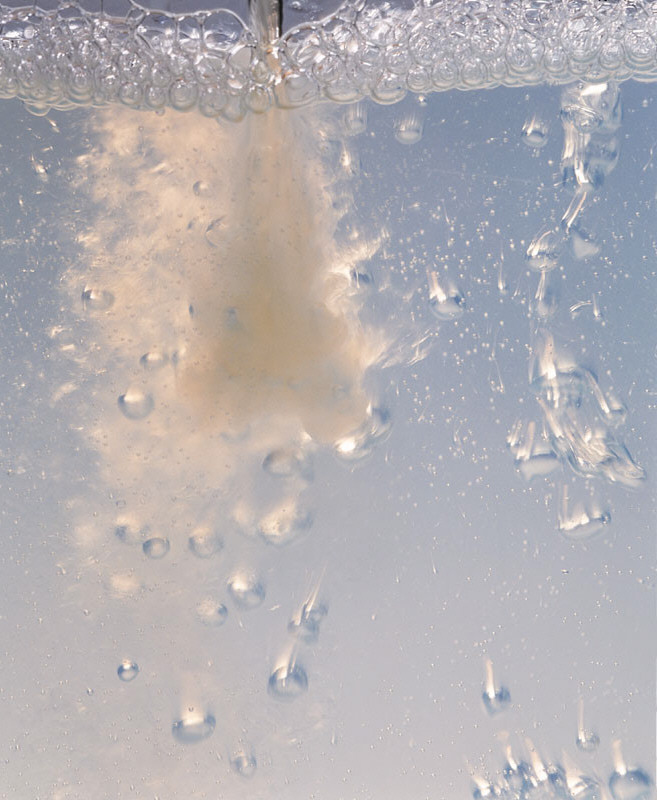Ideal Practices for Selecting the Right Anti-Foam Control Solution for Your Needs
Choosing a reliable anti-foam control option necessitates an extensive analysis of your distinct operational demands. Secret factors to consider consist of the particular residential or commercial properties of your process, such as temperature, pH, and chemical interactions, all of which significantly influence the performance of defoaming representatives.
Understand Your Foam Trouble
Often, companies run into foam-related concerns that can prevent operational efficiency and product high quality. Foam formation can occur throughout numerous procedures, consisting of mixing, fermenting, and transportation, and it typically leads to tools ineffectiveness, production downtime, and boosted functional expenses. Recognizing the underlying root causes of foam generation is important for addressing the trouble effectively.
Foam can emerge from several variables, such as the nature of the products included, anxiety levels, temperature variations, and chain reactions. As an example, certain surfactants can worsen lathering, while high shear mixing can introduce air, causing unwanted foam build-up. In addition, environmental problems and the specific qualities of the fluid systems being used can significantly influence foam actions.
By assessing these variables, companies can acquire understandings right into their foam concerns, enabling them to develop targeted approaches to reduce foam development and improve total process performance. This fundamental understanding is vital for choosing a proper anti-foam control service customized to certain functional requirements.
Evaluate Anti-Foam Options
When considering anti-foam options, it is vital to extensively evaluate the various solutions offered on the market to locate the most ideal service for your certain foam-related challenges. Anti-foam representatives can be found in varied kinds, consisting of silicone-based, non-silicone, and all-natural formulas, each offering distinctive homes and performance attributes.
Begin by analyzing the particular application needs, such as temperature limits, pH degrees, and the sort of foam being created. For example, silicone-based representatives are recognized for their efficiency in high-temperature environments, while non-silicone alternatives might be better in food handling applications due to governing factors to consider.
It is additionally critical to consider the price of application and the desired long life of the foam control. Some formulas might offer immediate defoaming action, while others supply long term security. Performing small-scale tests can supply understandings right into the performance of each alternative in real-world conditions.
Consider Application Compatibility
In the realm of anti-foam solutions, guaranteeing application compatibility is paramount for accomplishing optimal efficiency. The efficiency of an anti-foam representative greatly depends on its capacity to function harmoniously within the details criteria of your application, including temperature, pH, and the existence of other chemicals. Various formulas may do variably throughout varied problems, hence thorough screening is essential.
Begin by recognizing the features of your process, such as thickness and the nature of the tool in which the anti-foam will be used. As an example, some anti-foam agents may work well in liquid options yet fail in organic solvents. In addition, think about the possible interactions with existing products and ingredients to stay clear of undesirable impacts.
It is likewise crucial to assess the approach of application. Whether the anti-foam is introduced continuously or batch-wise can influence its efficiency and longevity in the system. Make certain that the chosen product is not just compatible with the functional specifications but also lines up with any kind of governing needs relevant to your industry.
Assess Environmental Impact
Just how does the ecological impact of an anti-foam control service affect your overall option process? The ecological footprint of your selected anti-foam agent is extremely important, as it shows your commitment to sustainability and regulative conformity. Selecting a product with minimal environmental repercussions can enhance your company photo and foster client depend on.
When analyzing ecological influence, think about the biodegradability of the anti-foam option. Eco-friendly options are normally preferable, as they break down more rapidly and minimize long-lasting ecological injury. Furthermore, examine the capacity for bioaccumulation and toxicity to water life. Solutions with high poisoning can pose significant dangers to local ecosystems, possibly leading to regulatory charges and environmental destruction.
One more crucial variable is the visibility of harmful materials. Anti-foams having hazardous chemicals may require special delivery and disposal steps, increasing functional prices and browse around these guys making complex conformity with ecological guidelines. Therefore, choosing green alternatives can reduce these risks.
Display and Maximize Efficiency
To make the most of the efficiency of your anti-foam control service, it is necessary to on a regular basis check and maximize its performance. Continual examination permits the identification of any discrepancies in foam levels and the subsequent efficiency of the anti-foam agent.
Execute a methodical technique to keep track of crucial efficiency indicators (KPIs), such as foam volume, stability, and the reaction time of the anti-foam representative. Use logical devices and strategies, such as aesthetic inspections, foam height dimensions, and specialized sensors, to gather exact data.

In addition, preserve open communication with suppliers for technological support and understandings on the newest advancements in anti-foam modern technology. This positive method not only help in attaining ideal efficiency but additionally reduces functional interruptions and boosts general process efficiency. On a regular basis revisiting and fine-tuning your anti-foam strategy ensures that you are efficiently handling foam-related difficulties, inevitably causing enhanced performance and expense savings.

Verdict
To conclude, selecting the ideal anti-foam control remedy requires a detailed analysis of particular application demands, consisting of temperature level, pH levels, and chemical compatibility. Extensive screening for instant and long term defoaming efficacy is vital, as is factor to consider of ecological influences and regulative compliance. By prioritizing environment-friendly choices and constantly keeping track of efficiency, operational efficiency can be boosted Look At This while efficiently reducing foam-related obstacles. Complying with these best practices will assist in enlightened decision-making in anti-foam control remedies.
Selecting a reliable anti-foam control service necessitates a comprehensive evaluation of your special operational requirements.In the world of anti-foam options, guaranteeing application compatibility is critical for achieving ideal performance.Exactly how does the environmental influence of an anti-foam control option affect your overall option process?In these details verdict, selecting the ideal anti-foam control option demands a thorough analysis of specific application requirements, consisting of temperature level, pH levels, and chemical compatibility (Anti-Foam Control Solutions). Adhering to these ideal practices will facilitate enlightened decision-making in anti-foam control remedies